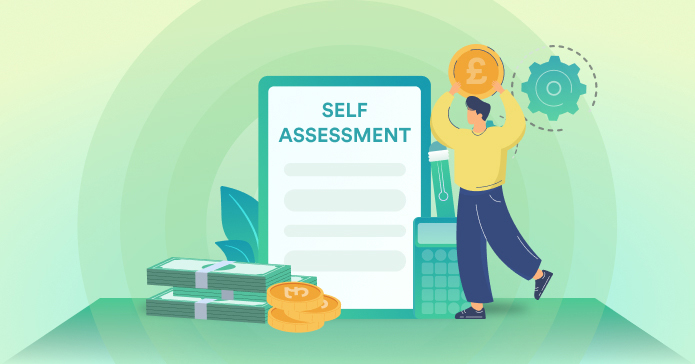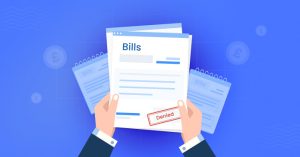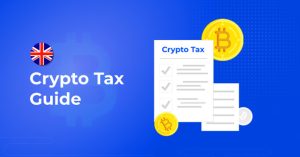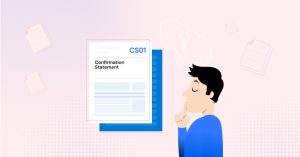Self-assessment tax payments can feel overwhelming, especially if you're a new freelancer or self-employed. But don’t worry—understanding the process and your options can make things so much easier (and way less stressful).
This guide breaks down everything you need to know about
- Self-assessment tax bills—
- Payment deadlines,
- How to pay, and
- What to do if you can’t pay it all at once.
- Payment on Account
By the end, you’ll feel confident and ready to handle your taxes like a pro. Let’s get started!
What is a Self-Assessment Tax Bill?
Self-assessment is how HMRC collects income tax, and it puts the responsibility on you to figure out and report what you owe. It’s especially important if you’re self-employed, a freelancer, or earning untaxed income from things like investments or rental properties.
When is Self-Assessment Payment Due?
Your self-assessment tax bill is what you owe HMRC after submitting your tax return. Self-assessment payment deadline is usually January 31st, following the end of the previous tax year on April 5th. Miss that deadline, and you could face penalties and interest charges—definitely something to avoid!
Can You Pay Tax Monthly?
Yes, you can pay your tax bill monthly through a "time-to-pay" agreement. This option is available for individuals who owe less than £10,000 in taxes and have no outstanding tax returns or other debts with HMRC. Depending on your situation, you may be able to spread out your payments over several months or even up to a year.
What if You Miss the Payment Deadline?
If you miss the self-assessment payment deadline of January 31st, HMRC will charge interest on the amount owed starting from February 1st. Additionally, they may also impose penalties for late payment which can increase the overall amount you owe. It's important to try and pay your tax bill on time to avoid these charges.
Payment On Account
Payment on account is an advance payment towards your next year’s tax bill, usually split into two installments due on January 31st and July 31st. It helps spread the cost of your tax and is based on your previous year’s bill. If you're unsure how this applies to you or want more guidance, check out our detailed Payment on Account blog post for further clarity.
What Happens if You Can’t Afford to Pay Your Tax Bill?
First things first, see how much you will pay with our self-assessment instalments tax calculator here.
If you’re struggling to pay your tax bill all at once, don’t worry—HMRC has support options to help. They can set up a payment plan that works for you, like a "time-to-pay" agreement, so you can break your tax bill into smaller, manageable instalments.
HMRC Payment Plans
You might qualify for an online payment plan if:
- Your debt is £30,000 or less.
- You don’t have any other payment plans or unpaid HMRC debts.
- All your tax returns are up to date.
- It’s been less than 60 days since your payment was due.
Online payment plans generally give you up to a year to pay off your debt. If you’re struggling financially, HMRC can work with you to set up a custom plan based on your income, expenses, savings, and other commitments.
A few things to keep in mind:
- HMRC will still charge interest on the remaining balance, even if you’re on a payment plan.
- If your tax is being recalculated, you might need to partially pay an estimated bill in the meantime.
- You can keep track of your balance through your personal tax account or request a detailed statement.
If your tax bill stays overdue, debt collection agencies might get involved. HMRC works with these agencies to recover only a small percentage of debts, and they follow strict rules since they’re acting on HMRC’s behalf.
5 Ways to Pay Your Self-Assessment Tax Bill
HMRC makes it easy to pay your self-assessment tax bill, and you’ve got a few options to choose from:
1. Pay Online with a Debit or Credit Card
One of the fastest ways to pay is online with your debit or credit card. Just log in to your HMRC account, head to the "pay self-assessment tax" section, and follow the steps. Keep in mind, though, that credit card payments might come with extra fees.
2. Online or Telephone Banking
If you use online or telephone banking, you can transfer your payment directly. Just make sure to use your self-assessment reference number and HMRC’s bank details. Label everything correctly to avoid any delays!
3. Pay Through Your Bank’s App or Website
Most banking apps and websites let you make payments directly to HMRC. You might find HMRC as a pre-listed payee, or you can manually enter the details from your tax bill. Super simple!
4. Send a Check by Post
Prefer the old-school way? You can mail a check made out to "HM Revenue and Customs only." Don’t forget to write your 10-digit self-assessment reference on the back of the check and send it to the address provided. Just be sure to post it a few days early so it gets there on time.
5. Set Up Weekly or Monthly Payments
If paying your whole bill in one go feels daunting, HMRC’s Budget Payment Plan lets you break it into smaller, more manageable amounts. You can make payments weekly or monthly—whatever works best for you.
No matter which method you choose, staying on top of your taxes has never been easier!
Why Staying On Top of Self-Assessment Payments is Crucial
Freelancers and self-employed individuals often face unpredictable income streams, which can make budgeting for tax payments challenging. However, staying organized and understanding your options ensures you avoid late-payment fees and additional interest.
To ensure success:
- Mark critical dates, including the self-assessment payment deadline (January 31st).
- Regularly review your finances to ensure you can cover your tax liabilities.
- Explore tailored payment options if you’re facing financial strain.
Simplify Your Tax Payments Today
Let us help you easily navigate paying your self-assessment tax bill after filing—our trusted experts are here to guide you every step of the way.
Dealing with your self-assessment tax doesn’t have to be overwhelming. HMRC has plenty of flexible payment options to help you stay on top of things. The trick is figuring out what works best for you, and that’s where we come in! Whether you want to pay online, set up a payment plan, or need help handling unexpected financial bumps, knowing your options makes it so much easier.
Let’s make tax season as smooth and stress-free as possible!













